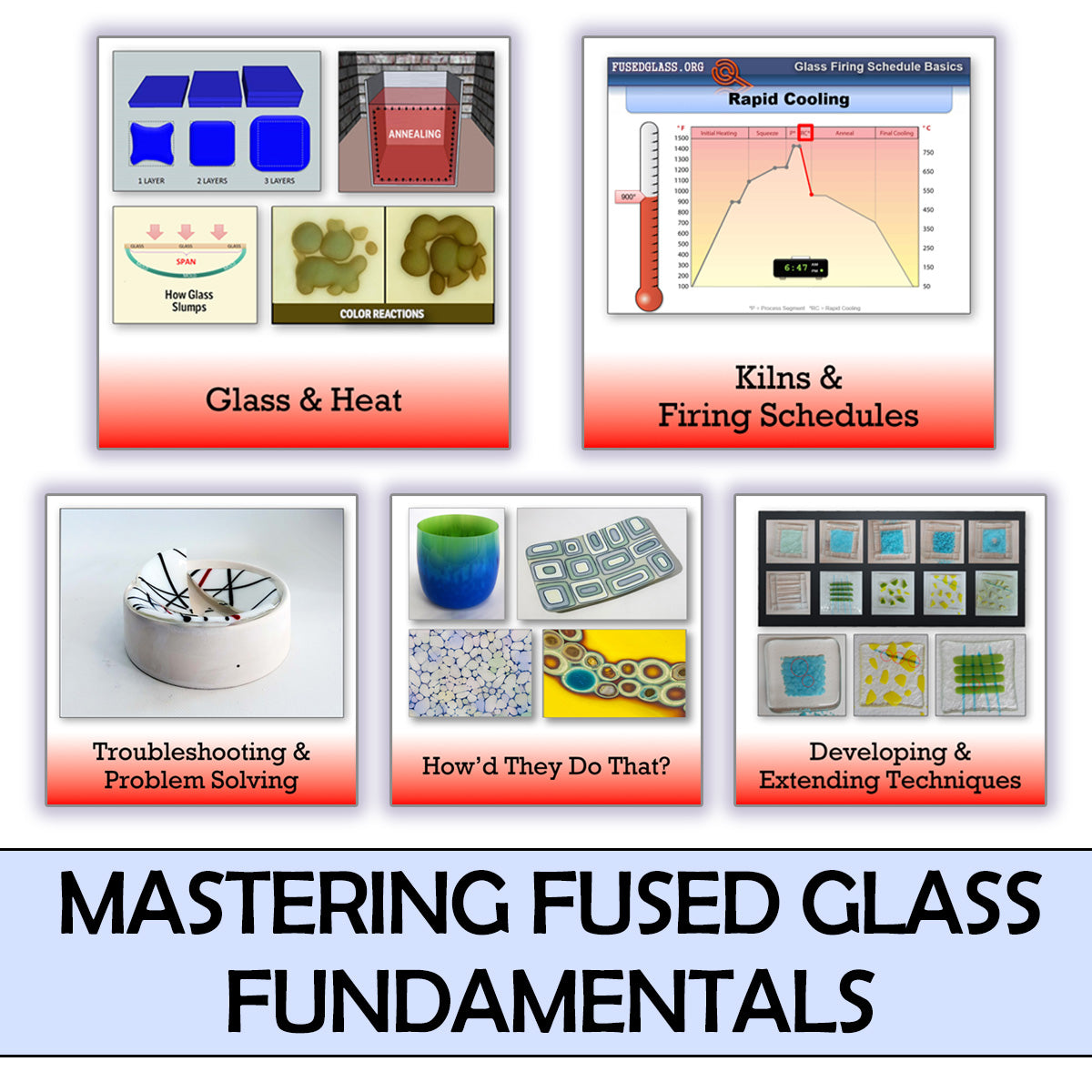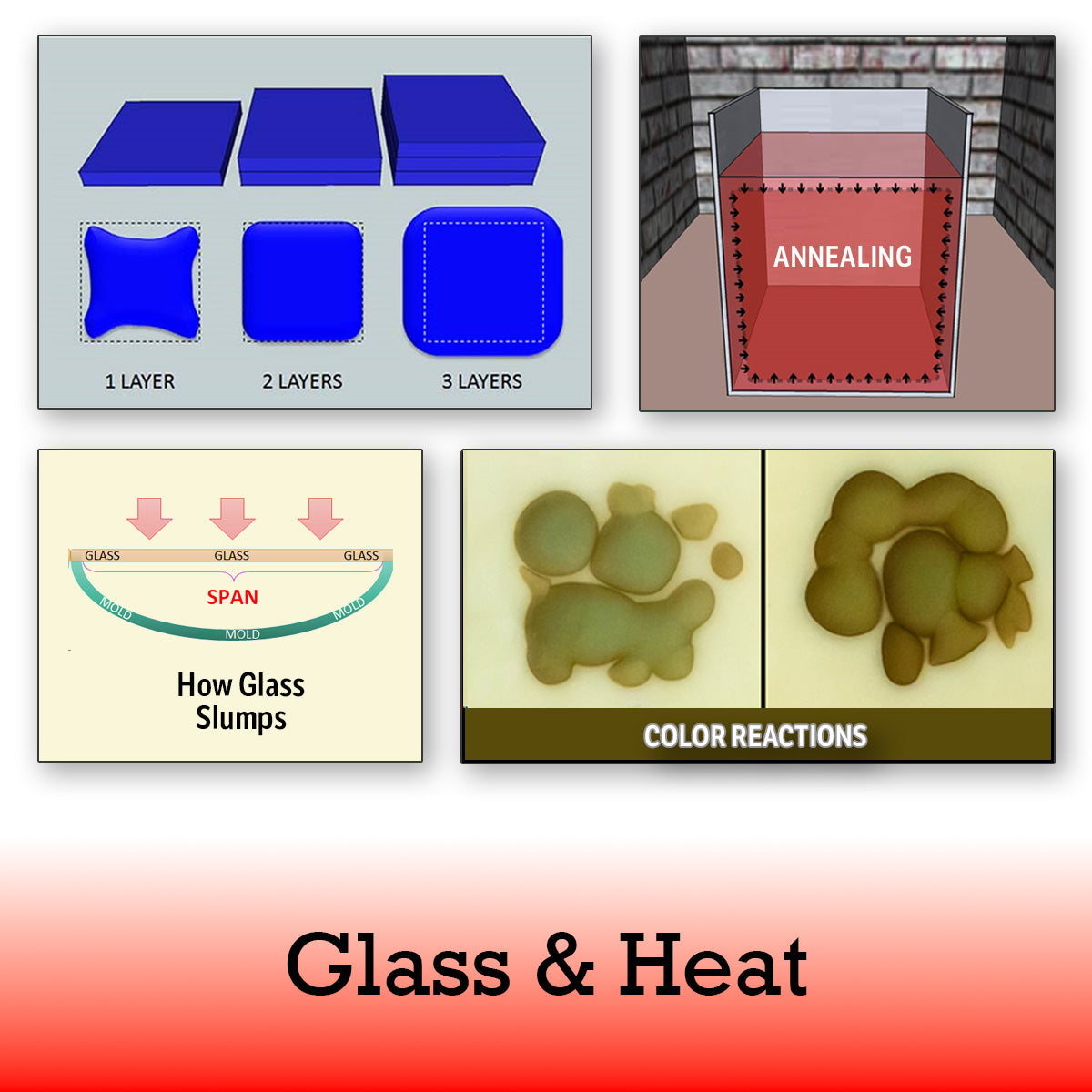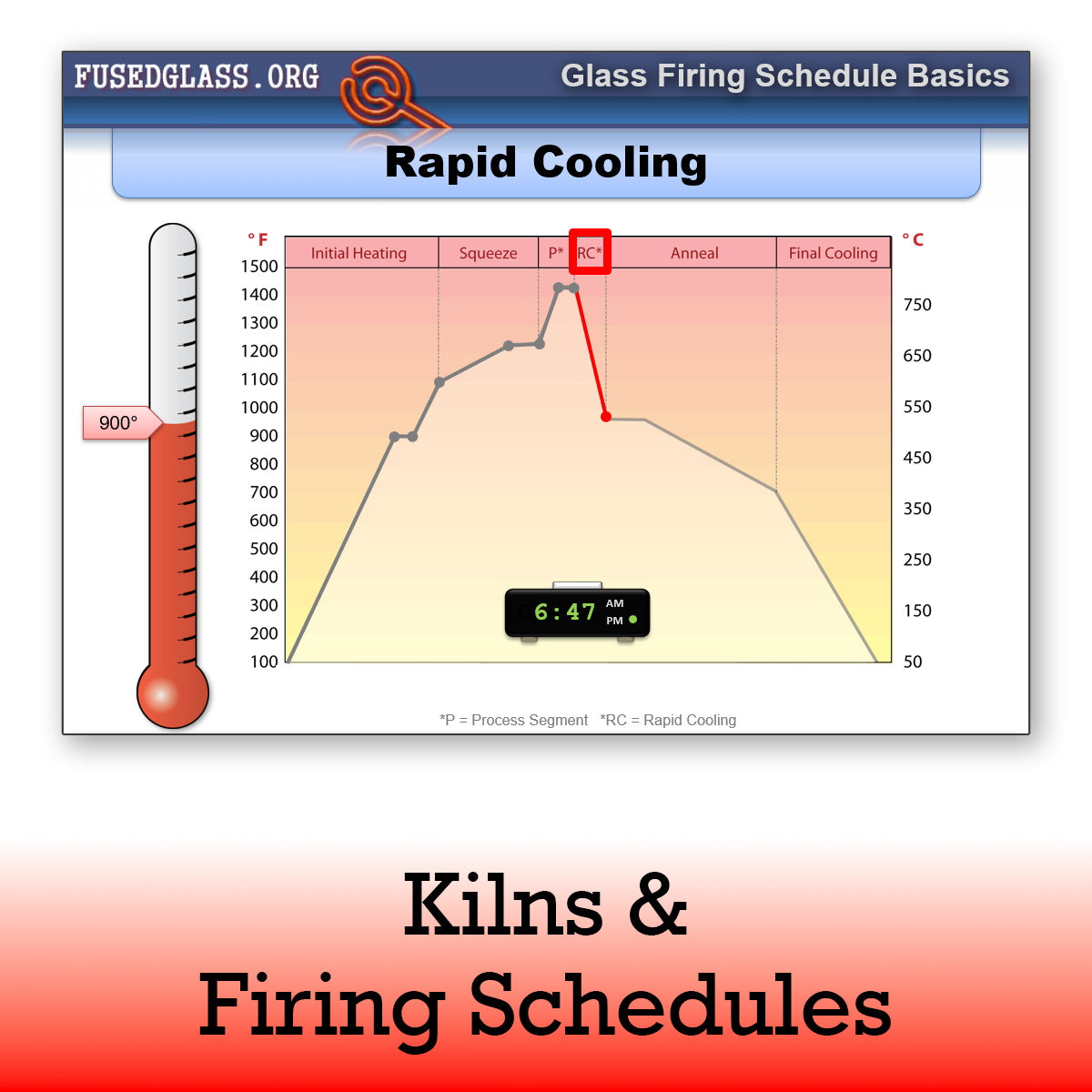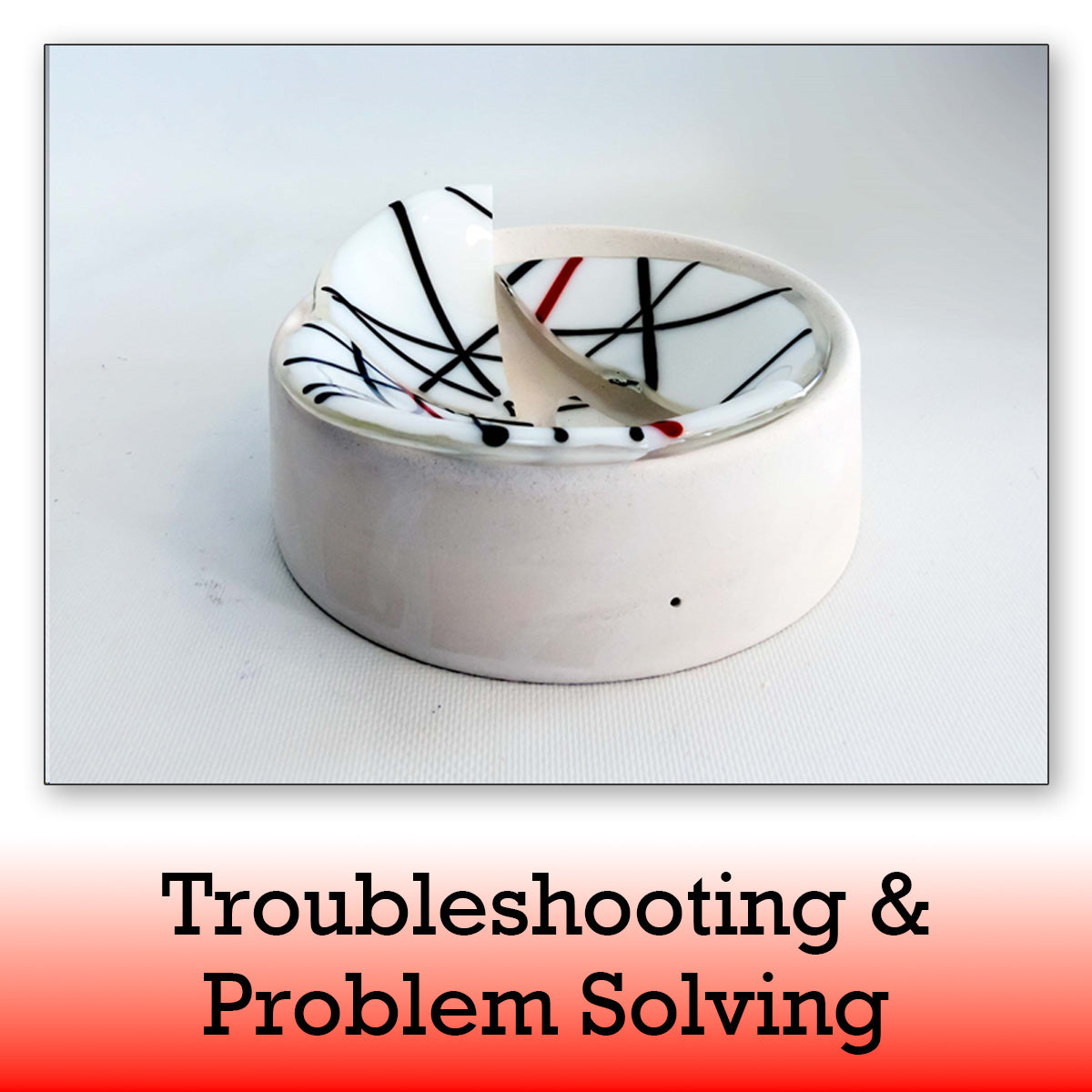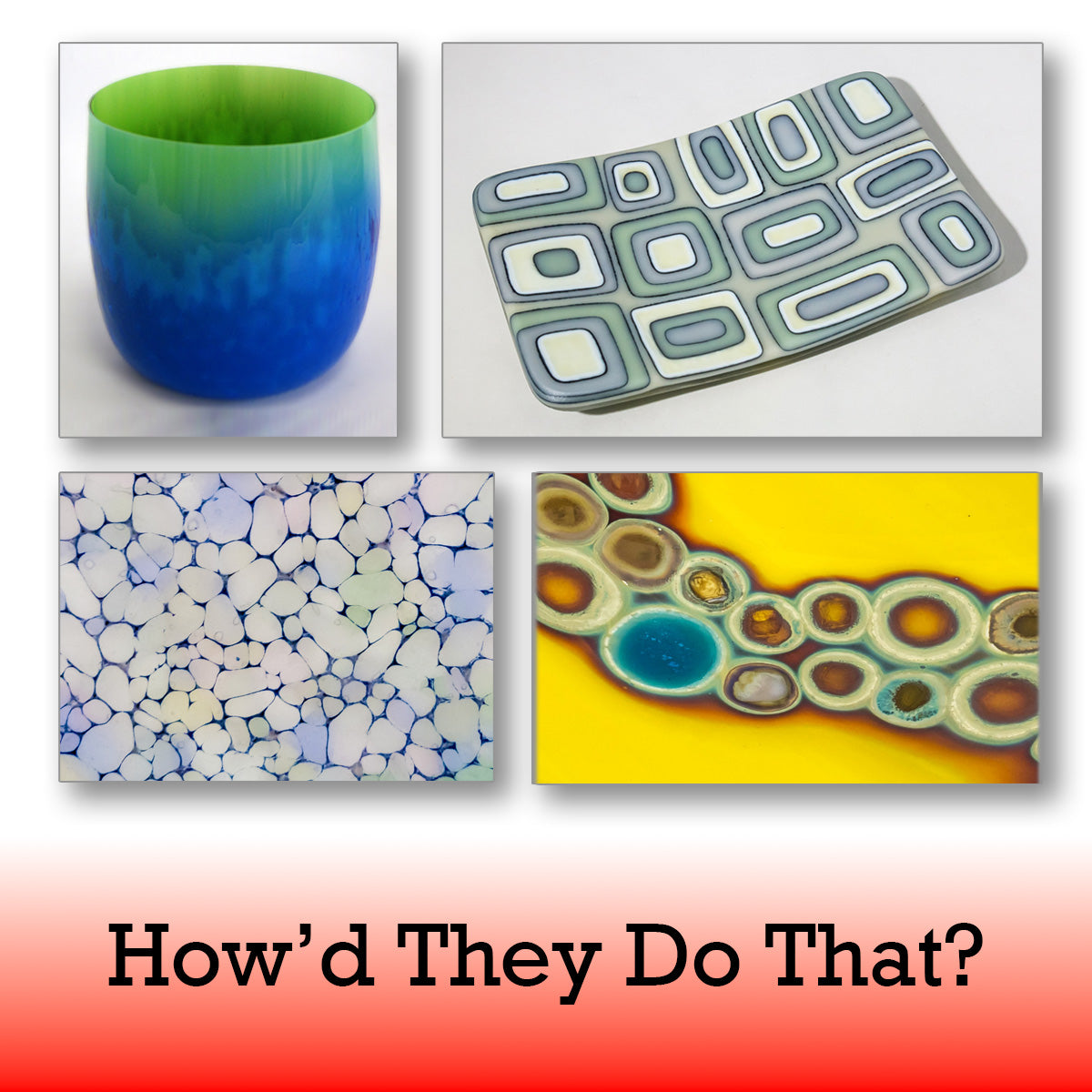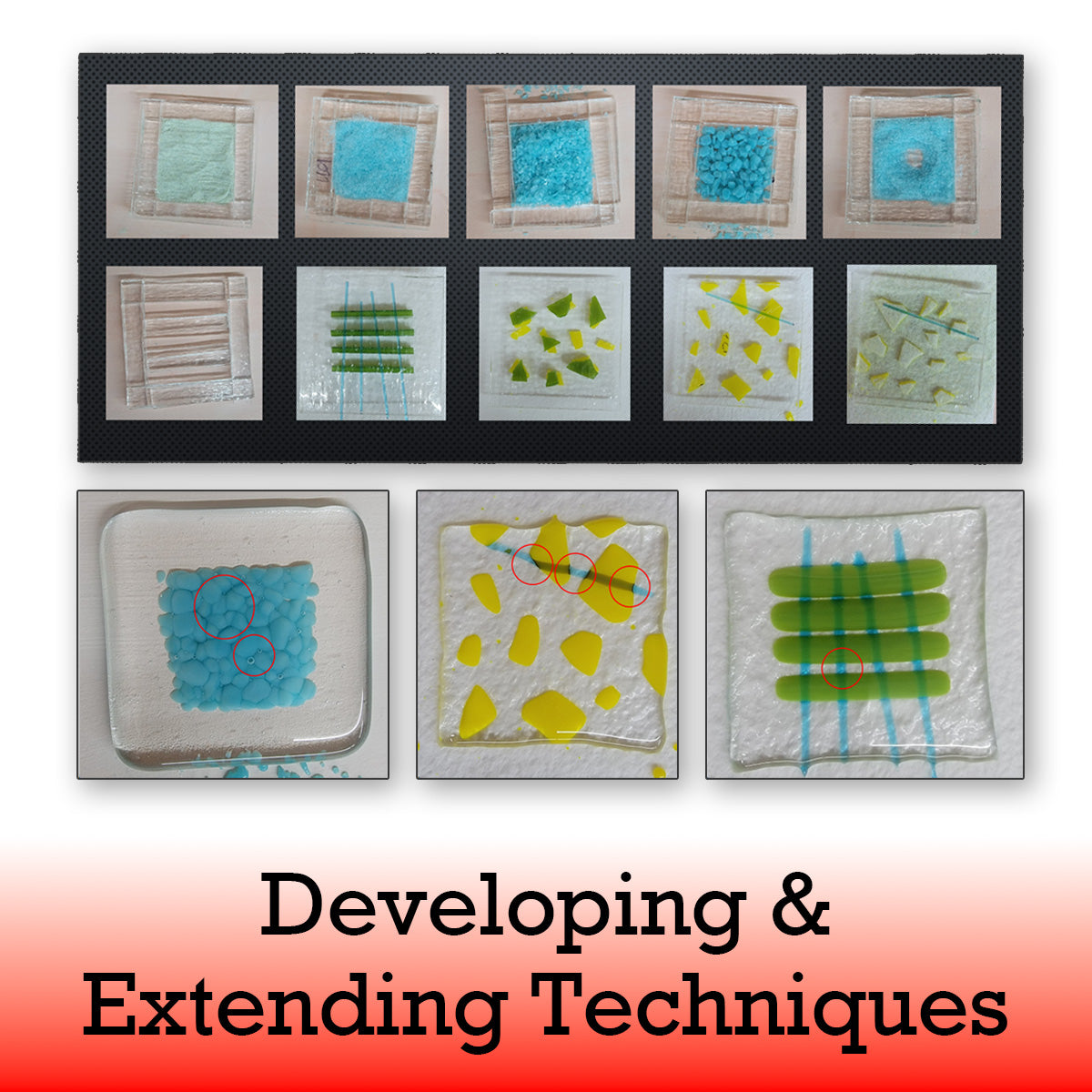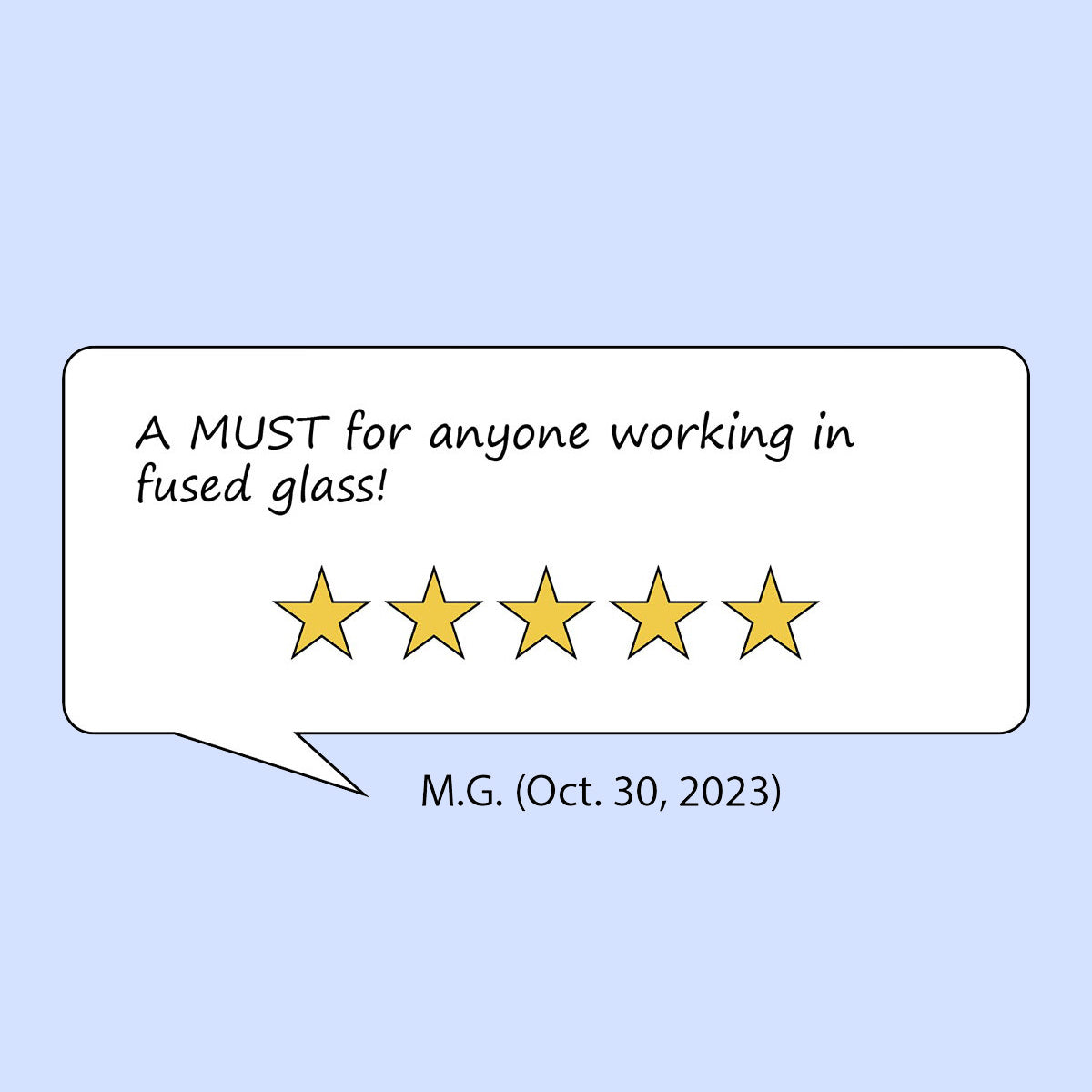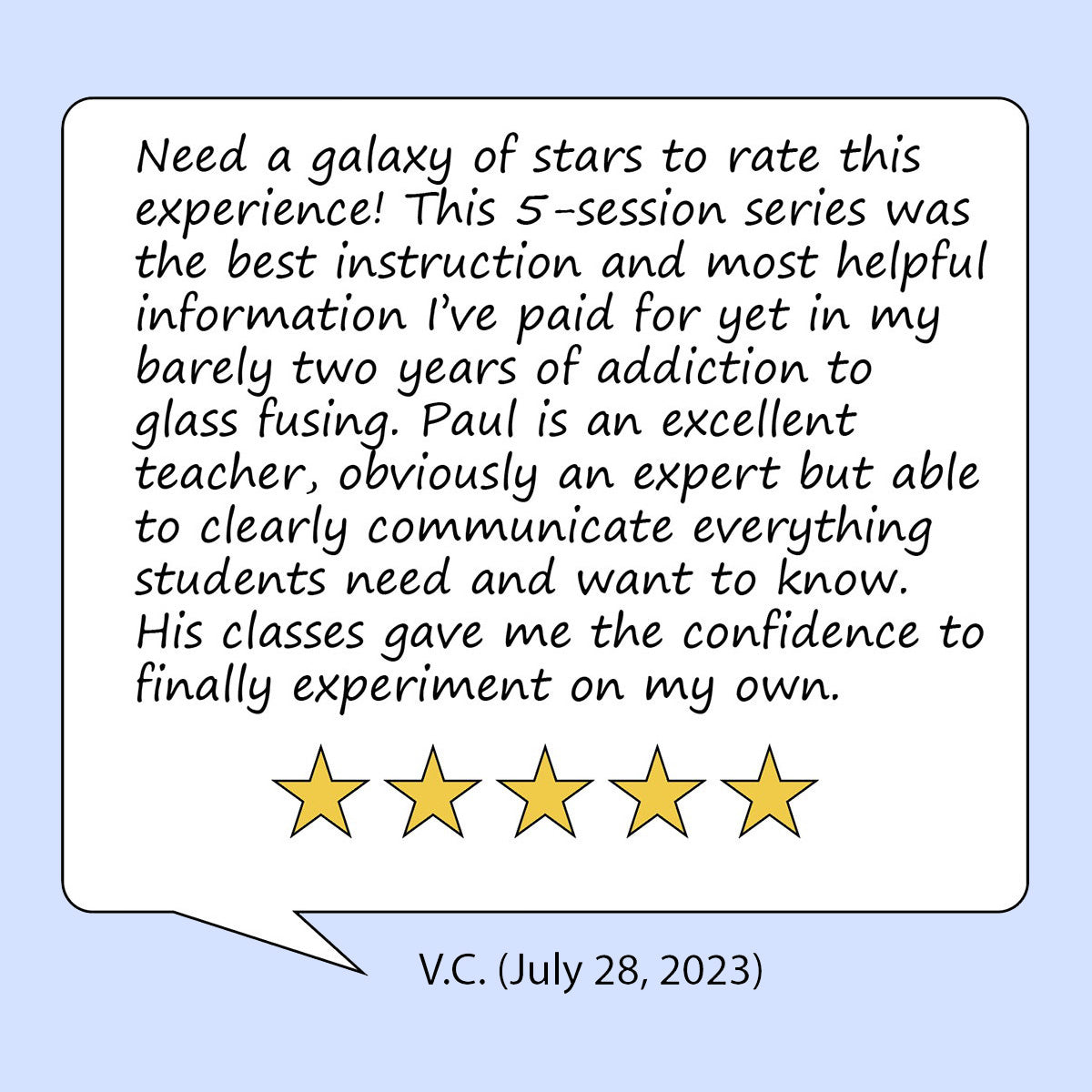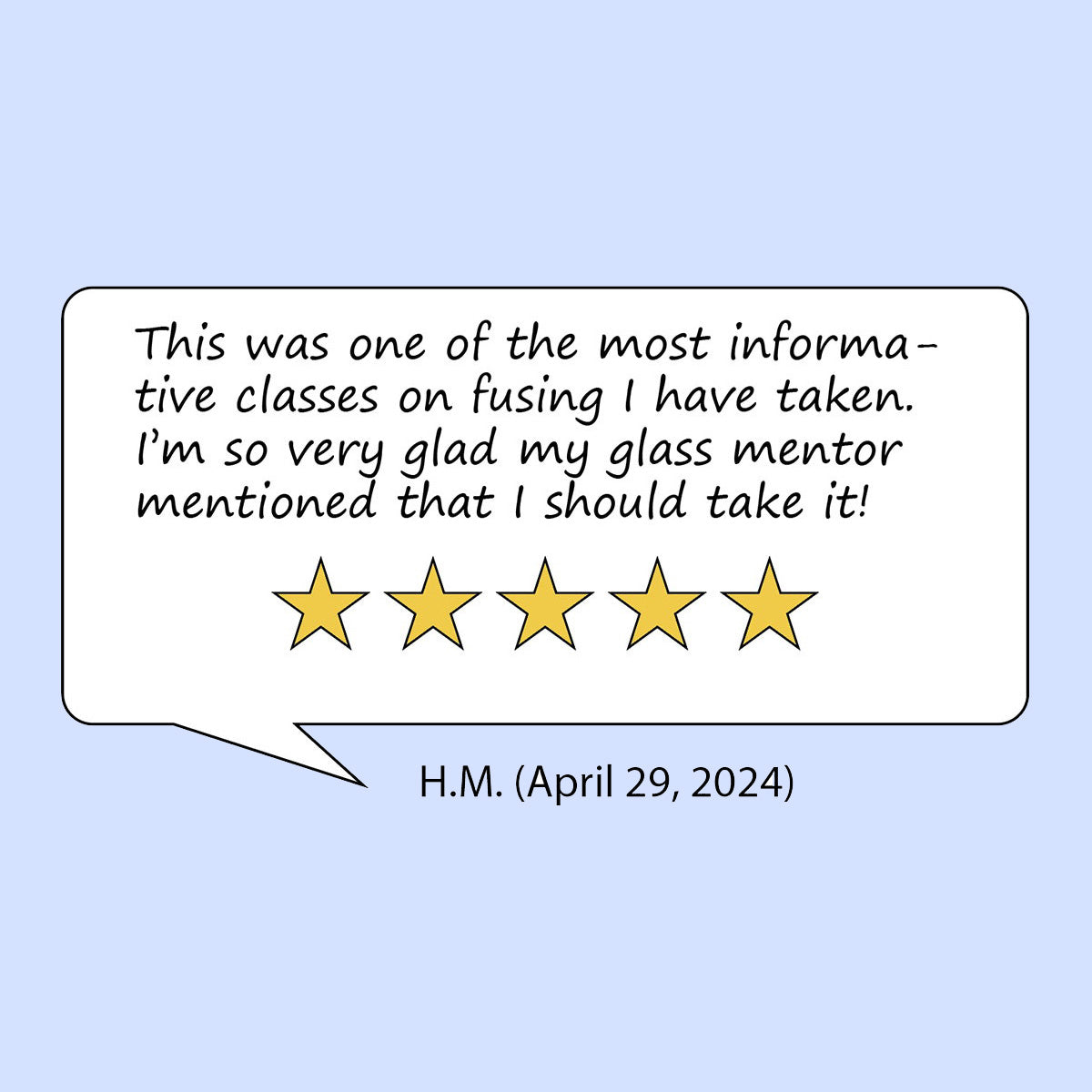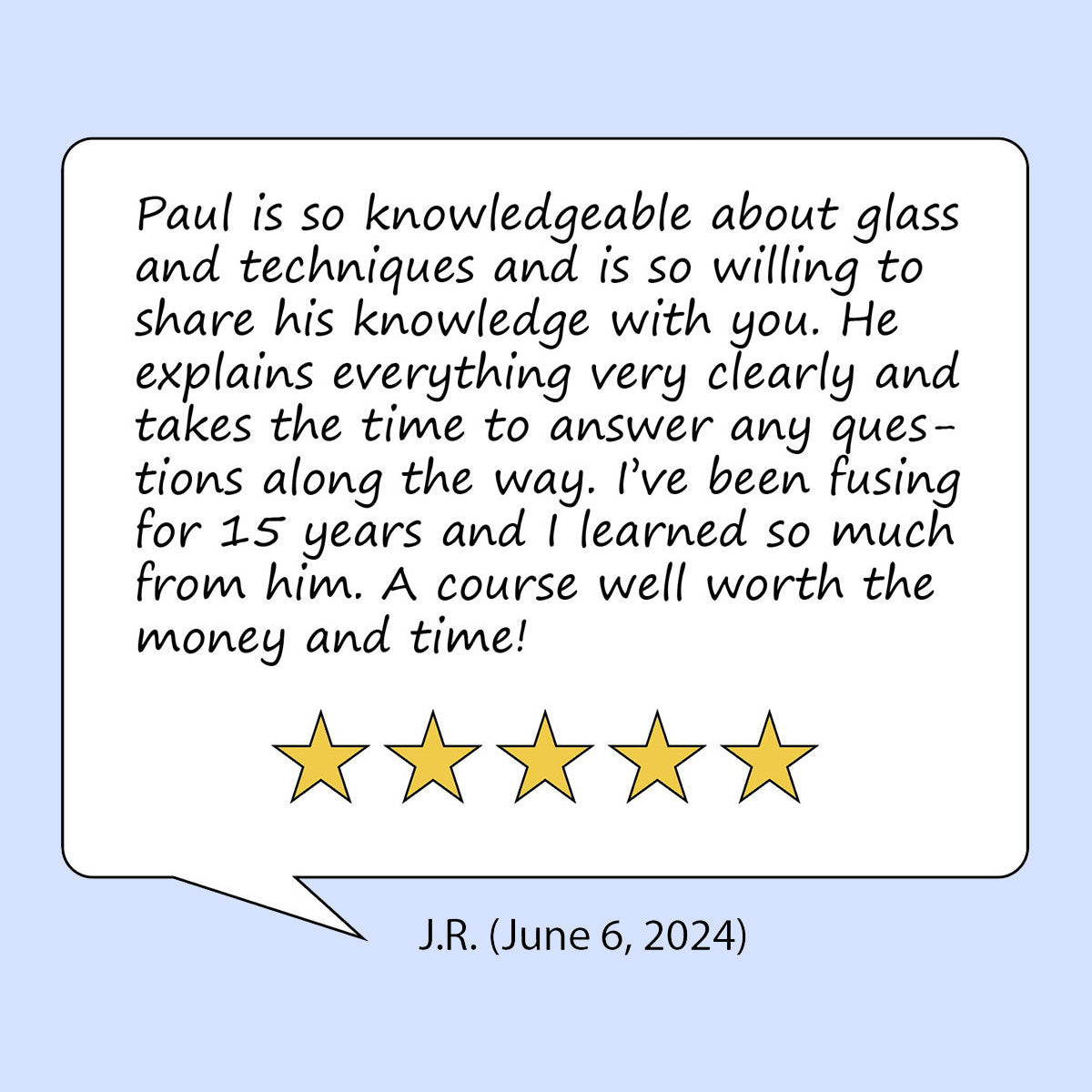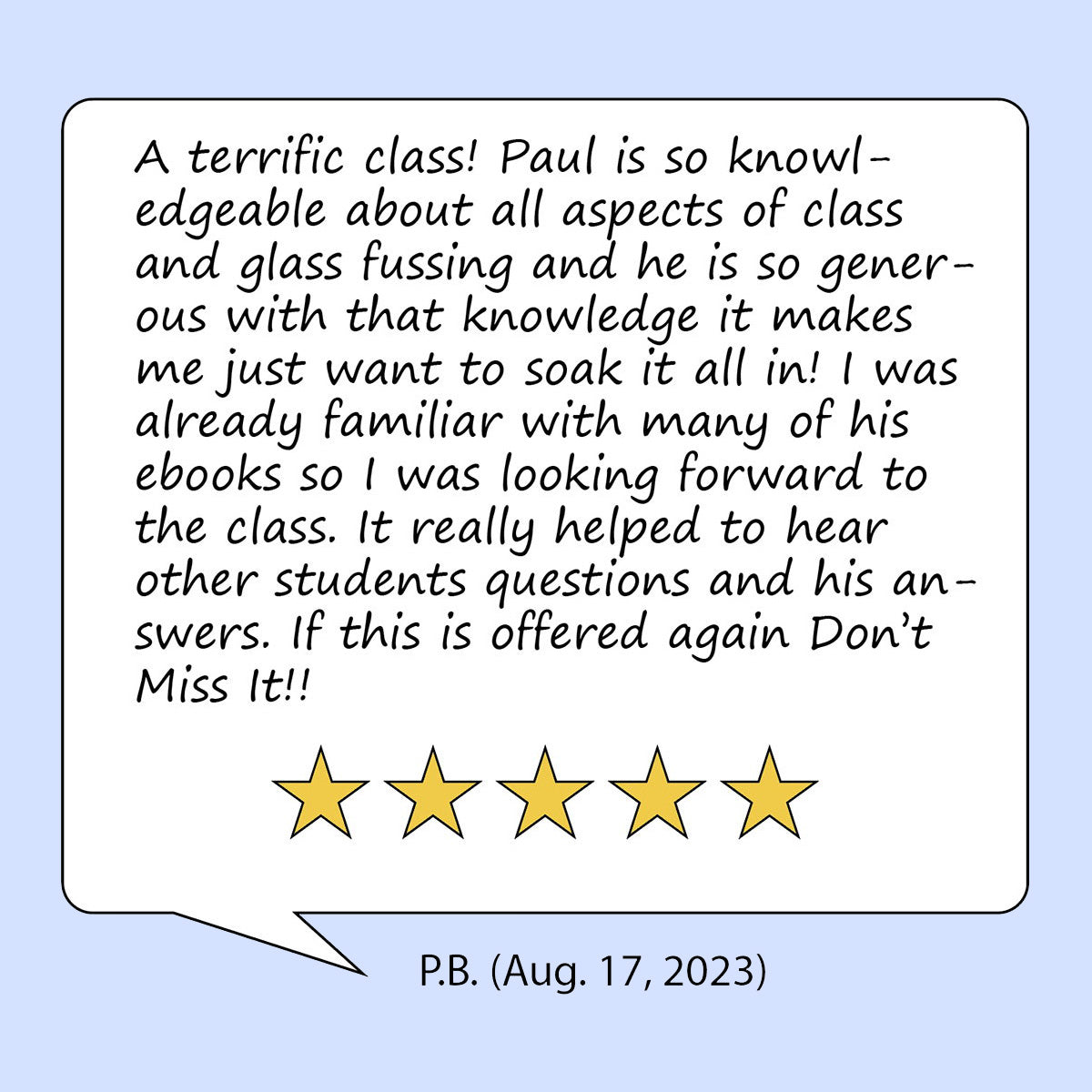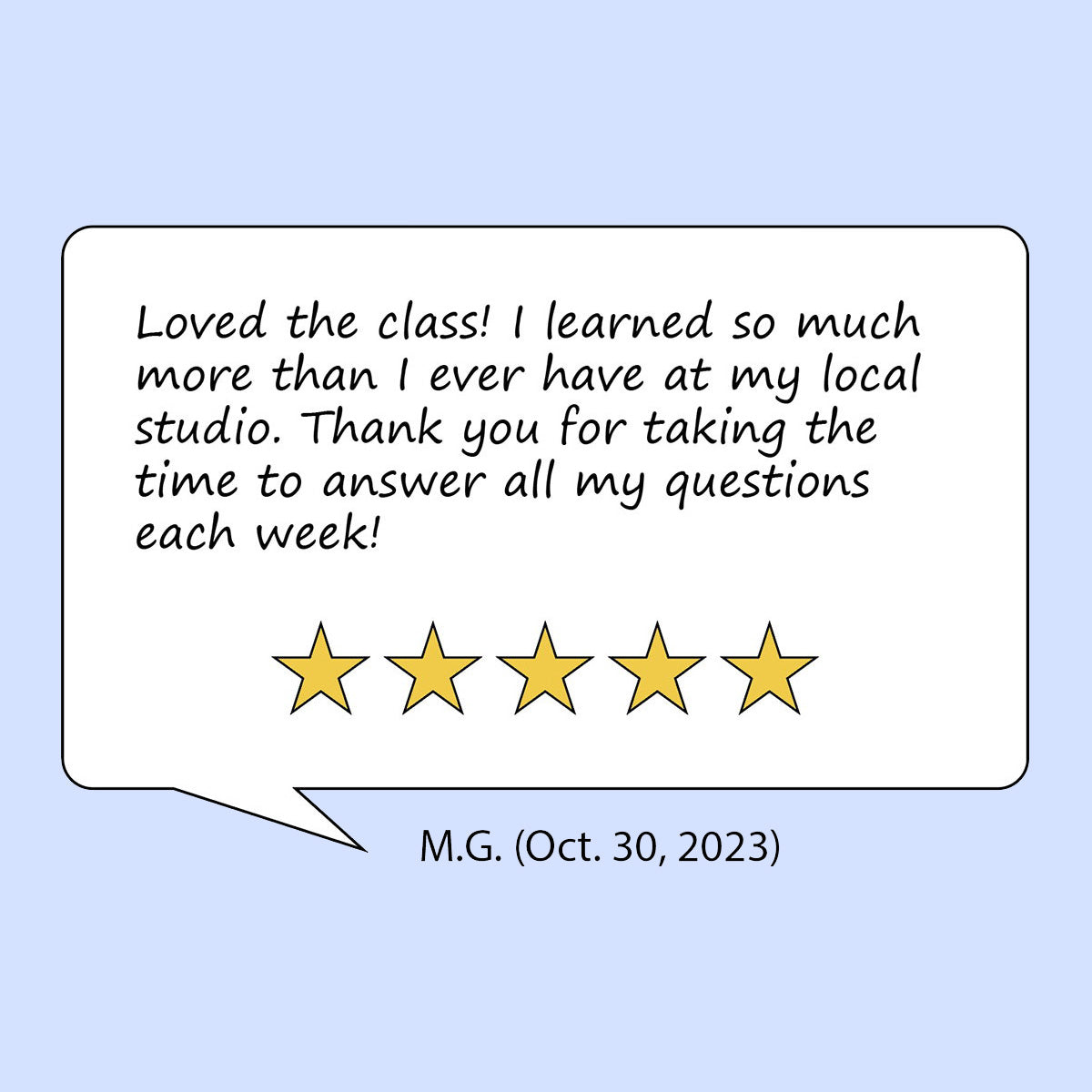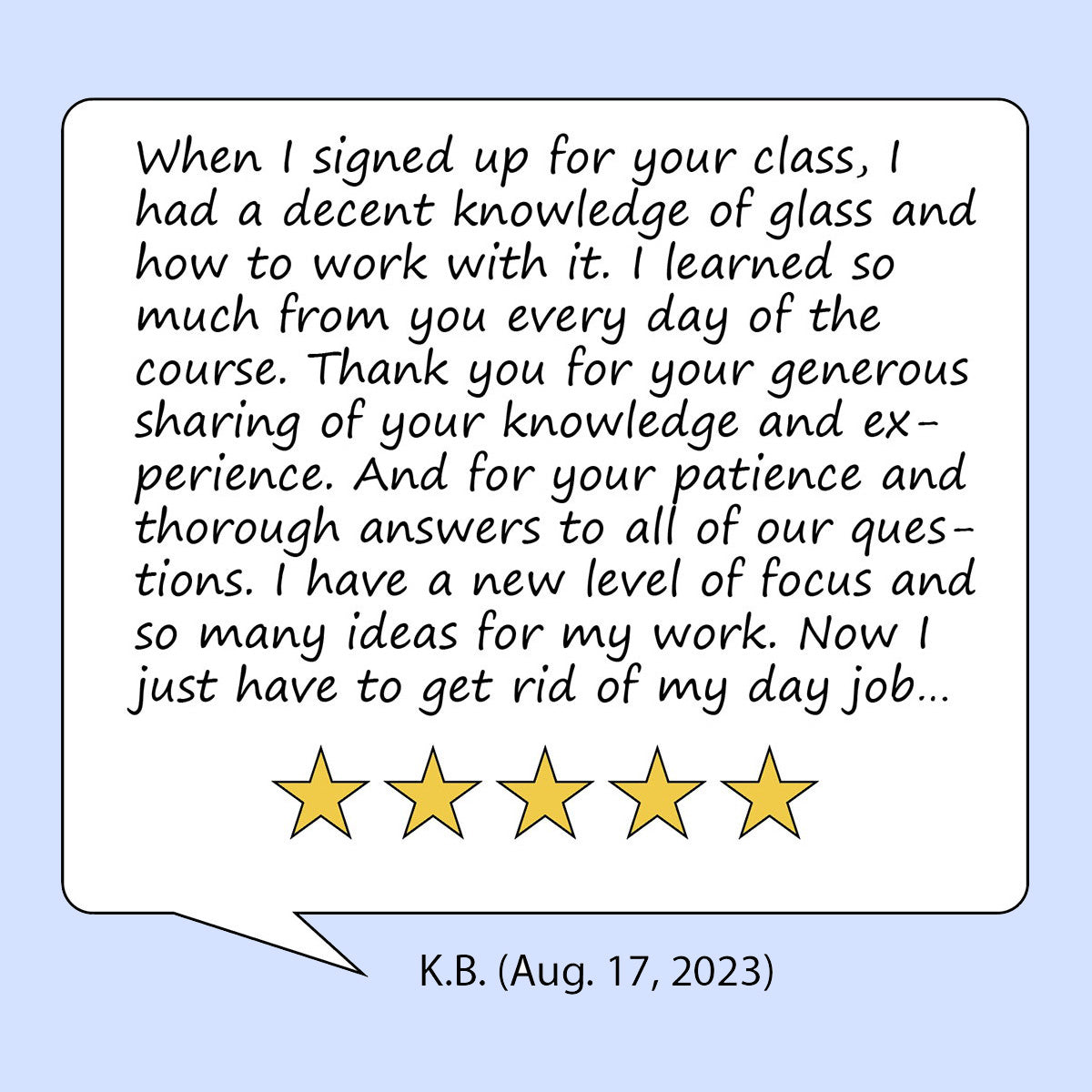Mastering Fused Glass Fundamentals
Mastering Fused Glass Fundamentals
Couldn't load pickup availability
IMPORTANT: Placing this class in your cart does NOT reserve a space for you. Your class reservation is not final until you complete checkout.
Classes meet weekly for five weeks via Zoom.
Designed for both new fusing enthusiasts and experienced kilnforming artists who want to fill in the gaps in their knowledge, this class is unlike any fusing class currently being taught.

Your instructor, Paul Tarlow, is the author of over 30 books on fusing and has taught a variety of fused glass topics internationally for over 20 years, including at Corning Museum of Glass, the Pittsburgh Glass Center, Warm Glass UK, and at North Lands in the Scottish Highlands. He will be teaching at Pilchuck Glass School in 2025.
Here are some important things to know:
• Classes are limited to 12 students to ensure everyone has the opportunity to ask questions and received personalized attention.
• Each class will include ample time for students to ask questions.
• Handouts are provided for every class.
• Recordings of the class are available to attendees for at least 90 days following each class.
• Additional help is available during weekly online office hours during and after the class as well.
Make sure to check out the student reviews on this page!
Here's what you can expect to learn during this unique opportunity:
1. Glass and Heat
Understanding glass as a material and how and why it behaves under heat is the most fundamental knowledge for the fused glass artist. Everything other piece of fusing knowledge builds on this. ;I this session you’ll learn about the need-to-know physics and chemistry of glass in easy-to-grasp language that enables you to better understand everything that happens in your kiln.
2. Kilns and Firing Schedules
The glass, the technique being used, and the kiln all matter when deciding how to fire your projects. The information provided here will give you a deeper understanding of how different styles of kilns impact firing glass and help you build the ;informed intuition ;that fusing artists need to be successful as they continue to grow their skills and produce increasingly complex and impressive work.
3. Troubleshooting and Problem Solving
Every fused glass artist who continues to push their boundaries and make increasingly better work will encounter failures. This section of the class will teach you how to diagnose what happens, understand why it happens, know how to fix it if possible and, most importantly, avoid many mistakes in the future.
4. How’d They Do That?
In this part of the class we will explore the most common techniques – and a few less common ones – and discuss how certain results were achieved. We’ll look at some of the best unique fused glass artwork being made today and discuss the methods behind them. Students are encouraged to submit photos of work they’ve seen and want to better understand.
5. Developing and Extending Techniques
In the last session of this class I will cover how I’ve created a studio environment conducive to getting unexpected results and how those surprises are explored, documented, and refined into reproducible techniques. Using this process, ;glass ;fusing artists can evolve and extend what they learn from other artists/teachers to create their own unique signature ;glass-working methods.
Share
